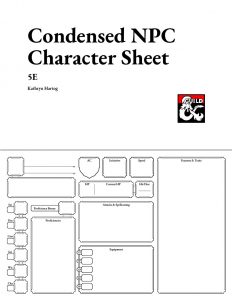This is an idea for encoding the administrative roles of D&D. Clarifying roles helps to smooth negotiation around decision making and record keeping.
I haven’t tested this idea yet but I plan to use it in an upcoming campaign.
The Roles
Leader
The ultimate arbiter on what the party does. They lead discussions and ask for input from other members, but their word is final.
Navigator
Keeps track of locations and maps. They know where the party has gone, and how to get where they’re going. This includes the general world and specific locations or dungeons.
Quartermaster
Catalog loot, treasure, equipment, and survival gear. They make sure the party is materially prepared for adventure.
Scribe
Keeps track of party goals & relationships. Who they know, what they know, and what they’ve promised to do. The quest log.
Assigning Roles
I assume that each player has one role, but if your table does not have 4 players, you can use some other configuration.
The party may choose roles at the beginning of a campaign and remain in the same roles session to session. Or you may decide to switch it up.


